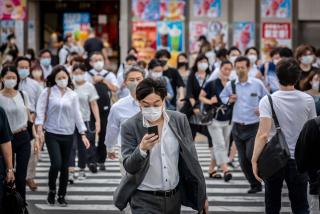Technology Must Travel 2-Way Street
- Share via
While the world’s two greatest military powers strive to build a more constructive relationship in the wake of the Reagan-Gorbachev summit, a little-noticed but critically important development in the relationship between the world’s two greatest economic powers is unfolding in Tokyo and Washington.
At the conclusion of Japanese Prime Minister Noboru Takeshita’s visit to the White House in January, a major unresolved issue was the renewal of the U.S.-Japan Science and Technology Agreement that was first signed in 1980. This agreement, which expired Jan. 31, provided a general framework for U.S.-Japan science and technology relations, including the principle of cooperation in those fields. But little progress has been made in reaching a new agreement.
Attention has been focused mainly on our huge trade deficit with Japan and the dollar’s losing battle with the yen, both of which have defied any significant corrective response. Yet a U.S.-Japan science and technology agreement that is fair to both sides can be a major help in correcting the trade imbalance.
A root cause of the imbalance is the inequitable technology flow between the United States and Japan that has existed for many years. American research and technology have undergirded the Japanese economic miracle and boomeranged in the form of a huge merchandise deficit with Japan.
Because technology flow is invariably a precursor of trade in the opposite direction, any inequities in such flows adversely affect trade balances. A gap in the technology flow with Japan in the 1970s underlies the trade gap in the ‘80s, and a technology gap in the ‘80s will perpetuate this gap in the ‘90s.
In recent years the Japanese have enjoyed a 5-to-1 advantage over the United States in electronics technology exchange and a 7-to-1 advantage in machine tools. About 70% of Japan’s worldwide technology imports have come from the United States.
This unequal flow of technical know-how, the “one-way street” syndrome, must stop.
Moves are under way in both countries to address the imbalance, but much more needs to be done. That is why the renewal of the U.S.-Japan science and technology agreement now being negotiated is so important. The agreement should pave the way for achieving two paramount goals: that equity be a fundamental precept of relationships in science and technology, and that Japan fund more basic research.
One of the principal objectives of U.S. negotiators is to gain an acknowledgment by the Japanese that there is an imbalance.
Let me suggest some specific steps that could be taken to achieve these goals.
One of our most critical needs is expansion of technological cooperation embracing a wide range of science and engineering. The potential is far beyond the present level of activity. For example, cooperation on the proposed superconducting super collider would benefit both countries.
Japan should open its government-supported research and development projects to Americans, just as Japanese researchers now have relatively easy access to our laboratories.
An estimated 7,000 Japanese graduate students and postdoctoral fellows now study science and engineering in the United States, while slightly more than 1,000 Americans are engaged in similar studies in Japan. Because cultural, language and other barriers make it difficult to equalize the situation, the Japanese government should be asked to subsidize any U.S. university where Japanese nationals are studying, to help defray a share of the university’s costs for educating foreign students and reduce U.S. taxpayer support for teaching assistantships and research.
In the long term Japan must develop institutions and programs that will permit it to share with other nations the costs as well as the benefits of technology. In the meantime, Japan should assume a fair share of responsibility for generating new knowledge. One way to do this would be to provide funding for basic research to be administered by the U.S. National Science Foundation.
Japan should also grant rights to American firms for technologies developed in Japan that are based on U.S. research.
U.S. small businesses have been a major source of innovation for both the United States and Japan. A program should be established to transfer Japanese technology to the United States through joint ventures with U.S. small firms and entrepreneurs.
In order to properly implement a program to correct these imbalances, a system is needed to measure the relative value of technologies.
Finally, the United States and Japan should establish a body to identify programs by which more equitable flows of technology are established to implement the new agreement.
For far too long we have been providing the Japanese with almost unlimited access to our technology while getting little in return. Because technology is the pivotal element in our ability to compete in the world marketplace, we must move as rapidly as possible to achieve an equitable technology flow. This is why the highest priority should be given to the revival of the U.S.-Japan Science and Technology Agreement.
More to Read
Inside the business of entertainment
The Wide Shot brings you news, analysis and insights on everything from streaming wars to production — and what it all means for the future.
You may occasionally receive promotional content from the Los Angeles Times.









